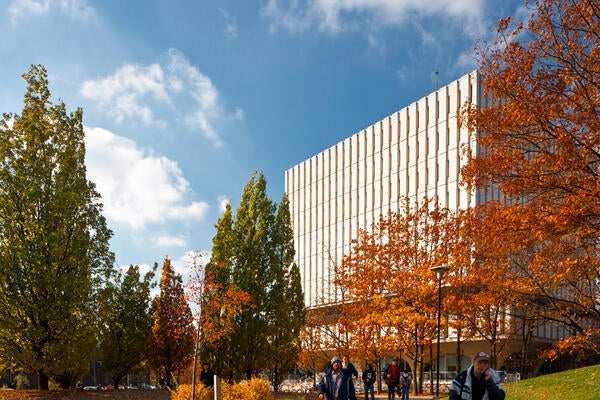
Removing microplastics with engineered bacteria
Researchers altered bacteria found in wastewater treatment, where microplastics can enter environment

Researchers altered bacteria found in wastewater treatment, where microplastics can enter environment
By Media RelationsMicroplastics can go right through wastewater treatment plants, and researchers have engineered bacteria commonly found in there to break down this pollution before it can persist in the environment.
Researchers from the University of Waterloo added DNA to several species of bacteria found in wastewater, allowing them to biodegrade polyethylene terephthalate (PET), a common plastic found in carpet, clothing and containers for food and beverages.
PET plastics take hundreds of years to degrade in the environment. Over time, they break down into microplastics, pieces of plastic less than 5 mm long, which enter the food chain. Chemicals in these plastics are associated with insulin resistance, cancer and decreased reproductive health.
“Think of these bacteria that already exist in water systems to clean up microplastics as biorobots that can be programmed to get the job done,” said Dr. Marc Aucoin, a professor in the Department of Chemical Engineering. “Microplastics in water also enhance the spread of antibiotic resistance, so this breakthrough could also address that concern."
The researchers use a natural process referred to as “bacterial sex,” where bacteria share genetic material with each other when multiplying. It enables the introduction of a new trait into the target bacteria, giving them the ability to break down microplastics.
To demonstrate the gene-exchange technique to enable wastewater bacteria to degrade plastics, this video shows two types of bacteria in red and green. The video shows the red strain and the green strain of bacteria exchanging genetic material so that the green strain becomes capable of fluorescing yellow. The researchers used this same gene-exchange technique to enable wastewater bacteria to degrade plastics. (University of Waterloo)
“As next steps, we will use modelling to understand how well the bacteria transfer the new genetic information under different environmental conditions and thus how effectively they can break down the plastics,” said Dr. Brian Ingalls, a professor in the Department of Applied Mathematics. “The long-term vision is to break down microplastics in wastewater treatment plants at scale.”
While the researchers will start with wastewater facilities, they also hope to find ways to clean up the plastic waste accumulating in oceans.
"We will assess the risks of using engineered, plastic-eating bacteria in the natural environment" said Aaron Yip, a PhD candidate in the Department of Chemical Engineering. "Right now, microplastic degradation in wastewater treatment plants is a safer application to target. Many of these facilities are already designed to neutralize bacteria in wastewater, which would kill any engineered bacteria prior to discharging water back into the environment.”
The study, “Degradation of polyethylene terephthalate (PET) plastics by wastewater bacteria engineered via conjugation," appears in Microbial Biotechnology.

Read more
Meet five exceptional Waterloo graduate students crossing the convocation stage as Class of 2025 valedictorians

Read more
Twenty-six researchers receive federal funding to drive discovery, innovation and research infrastructure development

Read more
The Royal Society of Canada welcomes five new fellows and one RSC College member from the University of Waterloo
The University of Waterloo acknowledges that much of our work takes place on the traditional territory of the Neutral, Anishinaabeg, and Haudenosaunee peoples. Our main campus is situated on the Haldimand Tract, the land granted to the Six Nations that includes six miles on each side of the Grand River. Our active work toward reconciliation takes place across our campuses through research, learning, teaching, and community building, and is co-ordinated within the Office of Indigenous Relations.